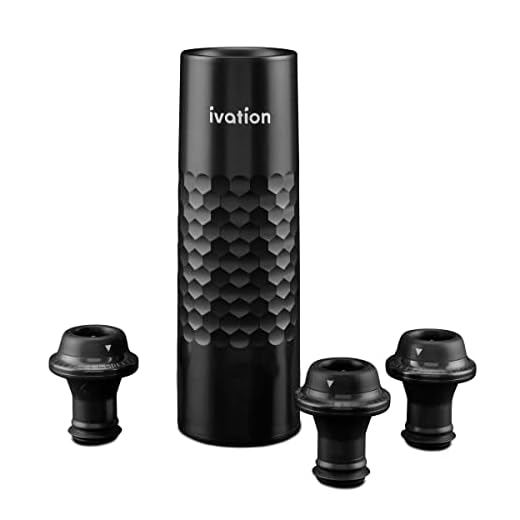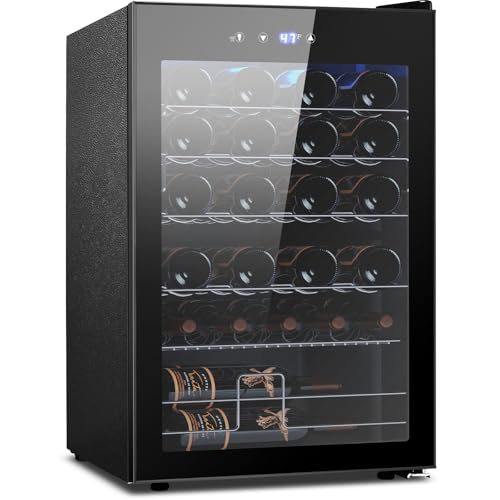



Chilling a certain type of grape beverage is a practice that can enhance enjoyment and flavor. A temperature range of 55°F to 65°F is often recommended for optimal tasting experiences. However, refrigeration can be beneficial in specific scenarios, particularly if a bottle remains unopened for an extended period.
Storing in a cooler environment can help preserve freshness and prevent oxidation. If a bottle is destined for consumption over a shorter timeframe, slight chilling can enhance the aromatic profile, allowing fruity notes to shine. For those who appreciate lighter-bodied varieties, a brief stay in a cooling unit may bring out delightful nuances.
Consideration of the duration of storage plays a crucial role. For immediate enjoyment, serving slightly chilled can be a delightful choice. If a bottle is to be aged, maintaining a consistent temperature away from light is essential. A wine cellar or a dedicated unit is preferable over standard refrigeration for long-term conservation.
In summary, while chilling may not be necessary for every bottle, understanding the nuances can elevate the tasting experience. Experimentation with temperatures can lead to discovering unique flavor profiles that resonate with personal preferences.
Should You Keep Red Wine in the Fridge?
Storing this beverage in a cooling appliance is beneficial for preserving certain characteristics. Optimal temperature for enjoyment generally ranges from 55°F to 65°F. For those who prefer a slightly cooler glass, placing bottles in the refrigerator for a short period prior to consumption can enhance the tasting experience.
Temperature fluctuations impact flavor profiles. Consistent, moderate temperatures aid in maintaining integrity. Extended exposure to cold environments can dull aroma and taste. A wine cooler, designed for this purpose, might serve as a preferable alternative for long-term storage.
Consider decanting prior to serving. Allowing it to breathe after removal from chilled storage can rejuvenate its nuances. When entertaining, a quick chill can be advantageous, but avoid prolonged refrigeration. The balance between refreshment and flavor complexity is key.
Understanding the Ideal Temperature for Red Wine
Optimal serving temperature ranges from 60°F to 65°F (15°C to 18°C). This range allows for the full expression of aromas and flavors. Serving at temperatures below this can mute the characteristics, while temperatures above may accentuate alcohol and diminish balance.
Different varietals benefit from slight adjustments within this range. For instance, lighter-bodied options like Pinot Noir can be enjoyed closer to 55°F (13°C), while fuller-bodied varieties such as Cabernet Sauvignon are best at around 65°F (18°C).
| Varietal | Ideal Temperature (°F) | Ideal Temperature (°C) |
|---|---|---|
| Pinot Noir | 55°F | 13°C |
| Merlot | 60°F | 15°C |
| Cabernet Sauvignon | 65°F | 18°C |
| Syrah/Shiraz | 65°F | 18°C |
Temperature can also vary based on personal preference and the dish being paired. Experimentation is key to finding what pleases palate while ensuring that the essence of each bottle shines through. A thermometer can be a helpful tool to achieve these precise temperatures.
Benefits of Chilling Red Wine
Chilling certain varieties of dark grape beverage enhances their flavor profile significantly. A temperature drop brings out the vibrant fruit notes, making the experience more refreshing and enjoyable. When served cool, tannins soften, allowing for a smoother mouthfeel and reducing any harshness that may be present at higher temperatures.
For fruit-forward selections, a slight chill accentuates berry and plum characteristics, leading to a more pronounced aromatic expression. This is particularly beneficial for lighter-bodied options, where the refreshing nature can elevate the overall tasting experience. Additionally, the cooling effect can invigorate palate perception, making it an ideal choice for warm weather or casual gatherings.
Moreover, serving at lower temperatures can help with food pairings. The crispness can complement grilled meats and spicy dishes, balancing flavors beautifully. It can also act as a palate cleanser, enhancing the overall dining experience.
Experimenting with different chill levels can yield surprising and delightful results, encouraging exploration of diverse flavor profiles. As a wine educator, I find that this approach opens up new dimensions for both novice drinkers and seasoned enthusiasts alike.
How Long Can You Store Red Wine in the Fridge?
Optimal storage duration for chilled varieties is typically between 3 to 5 days. After this period, flavors may begin to deteriorate and aromas can fade significantly.
For best results, consider the following:
- Use a vacuum pump to remove air from the bottle before sealing it. This can extend freshness.
- Store upright to minimize oxidation, especially if not using a cork.
- Label the bottle with the date it was opened to track freshness easily.
Avoid long-term storage in cooler conditions; while a short stay is fine, prolonged exposure can lead to undesirable changes in taste. Aim to consume within the recommended timeframe for optimal enjoyment.
Impact of Temperature Fluctuations on Wine Quality
Maintaining a consistent temperature is paramount for preserving the integrity of your favorite vintages. Fluctuations can lead to oxidation, resulting in off-flavors and an accelerated aging process. Ideally, a temperature range of 55°F to 65°F is recommended. A sudden drop or increase can shock the wine, affecting its bouquet and mouthfeel.
Consider how temperature impacts the cork. Excessive heat can cause the cork to expand, allowing air to seep in and spoil the liquid. Conversely, cold temperatures may contract the cork, leading to leakage. Both scenarios can compromise the overall quality, making it less enjoyable to savor.
In addition, rapid changes can disrupt the balance of tannins and acidity, altering the wine’s character. This is especially critical for more delicate varietals where nuance plays a significant role in the tasting experience.
For optimal enjoyment, invest in a wine fridge designed to maintain steady temperatures. This investment will safeguard your collection against detrimental temperature swings. If you’re passionate about pairing with food, remember that poorly stored wine can ruin even the best culinary experiences. For more information on pairing wines with specific dishes, check out this best dog food for dalmatian puppy guide for inspiration on complementing flavors.
Best Practices for Storing Opened Red Wine
Seal opened bottles tightly using the original cork or a wine stopper to minimize oxidation. This step helps maintain flavors and aromas for a longer duration.
Optimal Storage Conditions
- Store in a cool, dark place away from direct sunlight.
- A temperature between 50°F to 65°F works best.
- Avoid areas with high humidity or temperature fluctuations.
Duration of Freshness
- Most opened varieties last 3 to 5 days.
- Full-bodied options may last up to a week, while lighter styles generally need to be consumed sooner.
- Using a vacuum pump can extend freshness by removing air from the bottle.
Checking for changes in aroma and flavor before serving is essential. If there are off smells or flavors, it’s better to discard.
Common Misconceptions About Wine Storage
A prevalent belief is that all varieties of fermented grapes fare well at room temperature. In reality, most prefer a cooler climate. Storing these beverages in a warm environment can lead to premature aging and spoilage. Temperature control is vital for maintaining optimal flavor profiles.
An additional myth suggests that a cork guarantees preservation. While corks can provide a decent seal, they can also allow air infiltration over time, especially if improperly stored. Bottles standing upright can exacerbate this issue, as the cork may dry out and lose its sealing capacity.
Another misconception is that once a bottle is opened, it must be consumed within a few days. While oxygen exposure does impact quality, utilizing proper storage methods can extend enjoyment for up to a week. Tightly sealing the bottle and refrigerating it can significantly slow down oxidation.
Many believe that all bottles need to be stored horizontally. While this is true for those sealed with corks to keep the cork moist, bottles with screw caps can be stored upright without compromising quality.
Finally, some think that chilling these beverages is universally detrimental. In moderation, a slight chill can enhance specific characteristics, especially for lighter and fruit-forward styles. Understanding personal preferences and experimenting can lead to delightful discoveries.
When to Consider Alternative Storage Methods
For optimal preservation, think about alternate storage options if a bottle remains unopened for an extended period. Consider a wine cellar or a dedicated wine fridge, which maintains consistent temperatures and humidity levels. The ideal environment should be around 55°F (13°C), with humidity around 70%, preventing cork drying and oxidation.
Factors Influencing Storage Choices
Exposure to light significantly affects quality. Dark spaces are preferable, as UV rays can degrade the wine. Vibration can also be detrimental; thus, a stable location free from movement is recommended. If the goal is to age the beverage, a quiet, temperature-controlled space is key.
Short-Term Solutions
If immediate consumption is anticipated, utilizing a standard refrigerator can suffice for short durations. However, aim to bring the beverage back to a more suitable temperature before serving. For bottles left open, consider vacuum sealers or inert gas preservation systems to extend shelf life.









